DEPENDABLE ANIMALS FOR HOMESTEADING
What do soaring gas prices, food shortages, a deteriorating supply chain and crowded, mismanaged cities all have in common? They’ve all got a lot of people thinking about dipping their toes into homesteading.
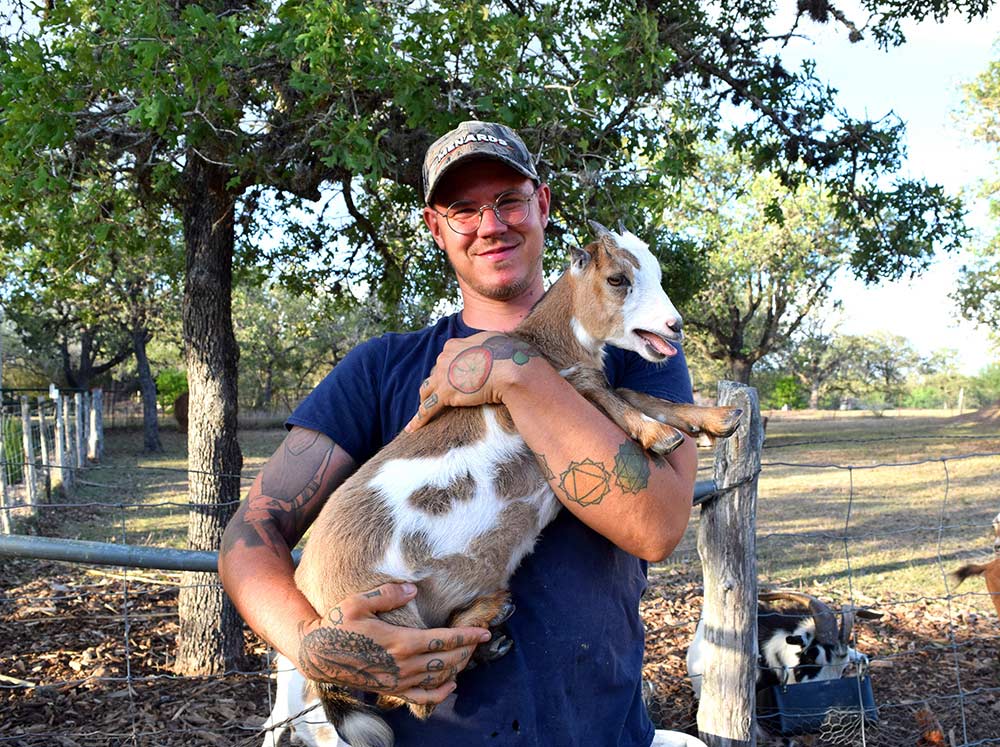
Whether you plan on forsaking your day job to become self-reliant and make a living off homesteading, or you simply have the space and time to add another hobby to your repertoire, homesteading can be made a lot easier if you cut out the trial-and-error and know just where to start.
No homesteading project is complete without a clutch of dependable animals, and with this list, you’re sure to start out on the right foot with a well-rounded, synergistic group.
1. GRAZING ANIMAL
Moo or bahh? Which animal you choose hinges on your main purpose: do you want it for meat, milk or wool? True, you can eat sheep, but do you like mutton? A cow will produce more meat than a sheep, and also might be preferable to eat. If you get the right breed, a cow can do double duty as a source of both milk and meat.
However, if you’re interested in textile production, sheep’s wool will be the main draw. Another thing to consider is how many you want. Do you have a small homestead and only want one or two grazing animals for your family’s needs, or are you looking to raise livestock for profit?
Cow
What farm is complete without a cow? This is probably your best bet if food is your primary concern. You will want to do your research on which breed is best for your region, budget and meat preferences, but a few of the most popular beef cattle are Angus, Texas Longhorn and Hereford. If you want something a little smaller and more versatile, consider the Jersey cow. They are top-notch milk producers and are said to yield delicious beef. Your main concern with a cow will be feed costs and whether you can provide enough pasture.
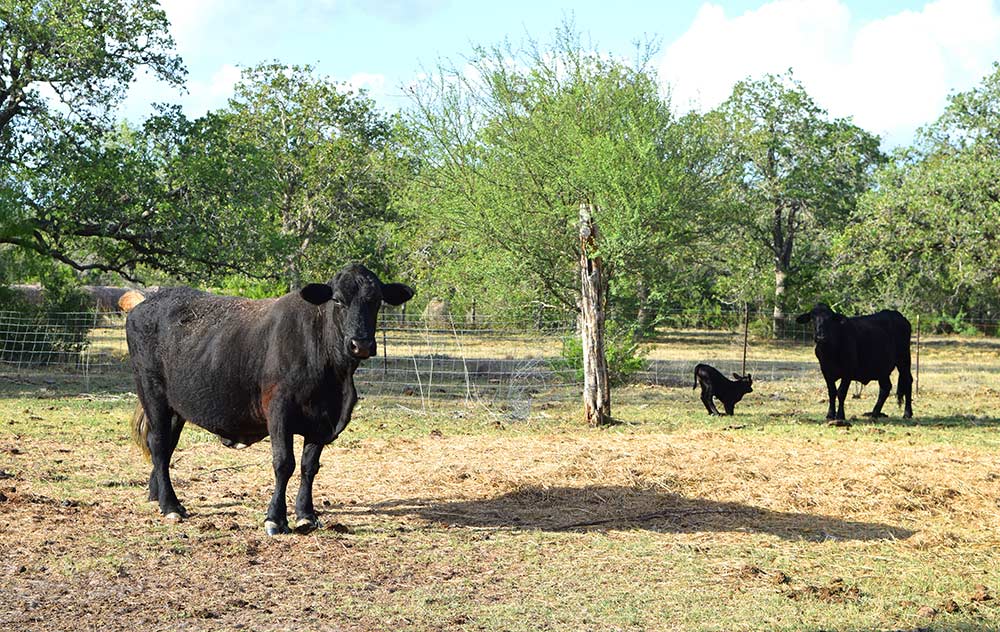
Sheep
Some of the best things about sheep are that they have low feed costs and are pretty low-maintenance. Unlike cattle (sometimes), sheep won’t challenge fences and they need far less heavy-duty fencing than cattle. They also grow well on grass alone and don’t usually require any specialized equipment such as feeders or waterers. And of course, they produce wool. However, a considerable downside to sheep is the parasites. Sheep are more susceptible to parasites and worms than cattle, and an infestation is often hard to catch before it does real (and possibly lethal) damage to the animal.
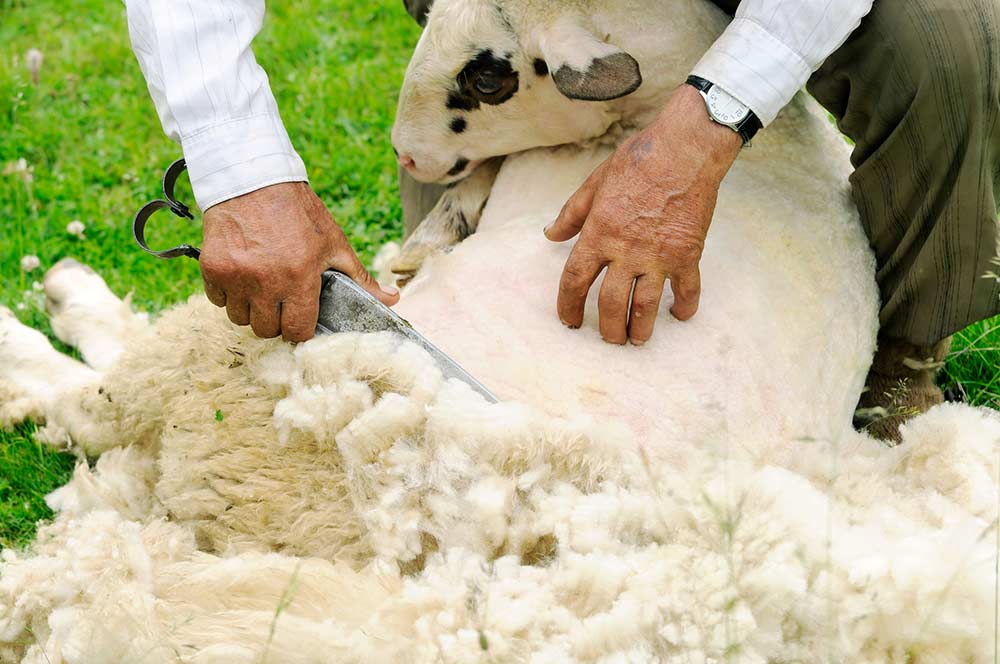
2. MINIATURE DAIRY GOAT
A miniature dairy goat is defined as a standard-sized purebred/American goat bred to a Nigerian Dwarf. There are a whole variety of breeds to suit different purposes, but if you simply want a small herd for your family’s needs, go for the Nigerian Dwarf. You will need to have a buck to go along with your doe. Does will only produce milk to feed their kids, but will lactate for up to eight months after giving birth.
“If you’re planning on separating the buck from the does to limit breeding, make sure you have a castrated buck (called a wether) to keep your buck company.”
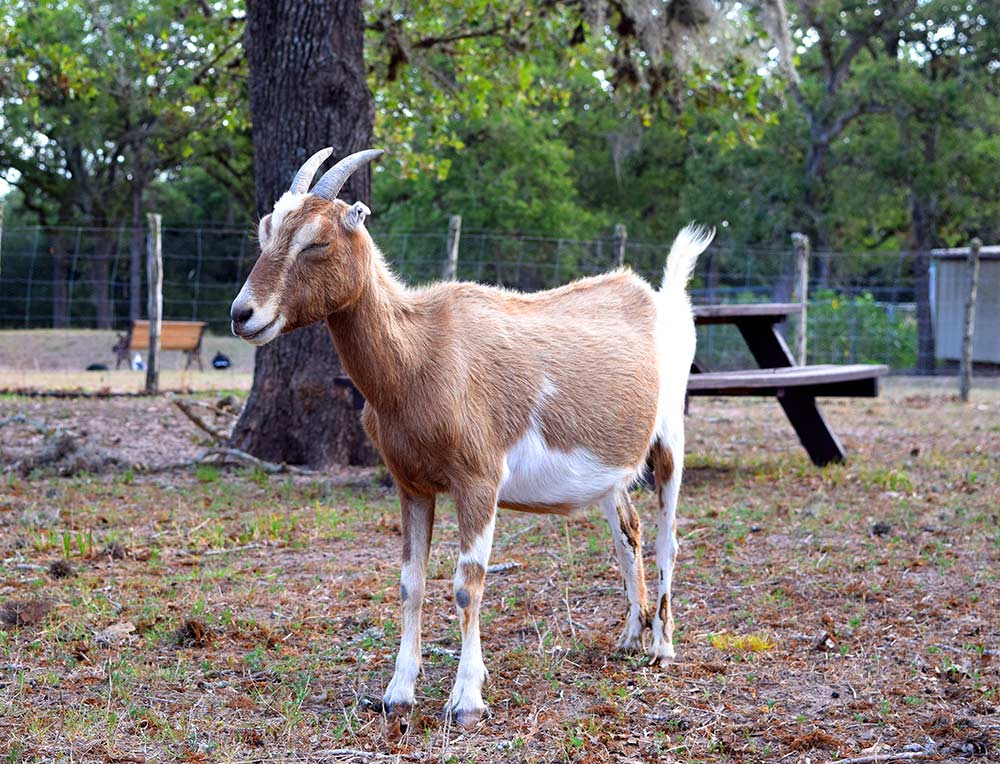
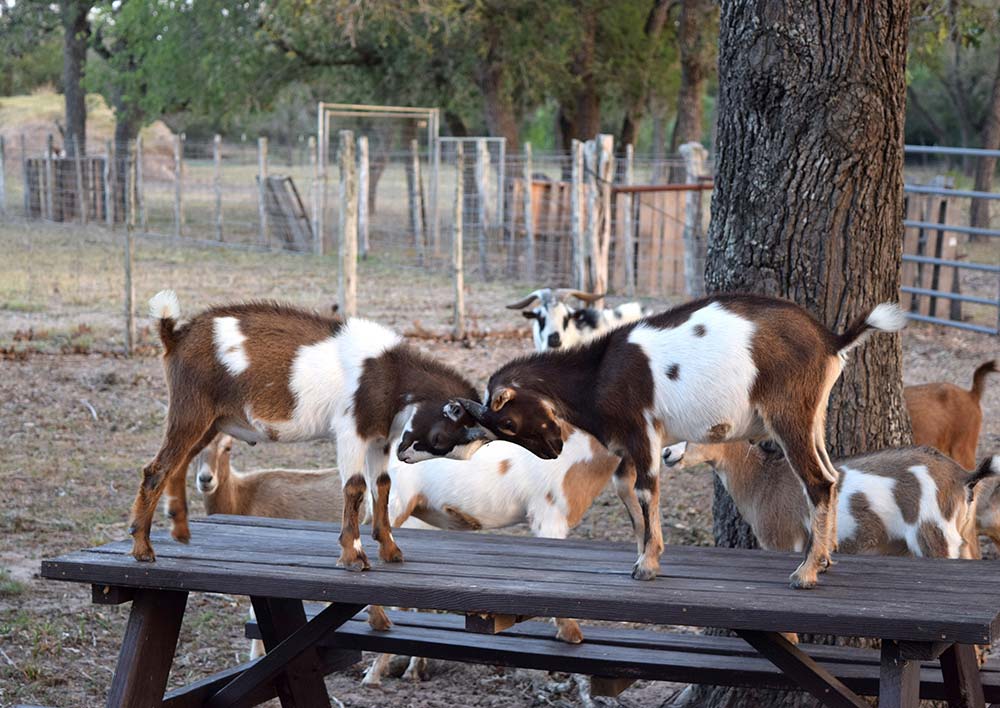
An ideal setup for a small family would be two does, a buck and the kids they birth. If you’re planning on separating the buck from the does to limit breeding, make sure you have a castrated buck (called a wether) to keep your boy company. Just like humans, these fellas get depressed if they don’t have a bro to pal around with.
Nigerian Dwarf
A miniature goat of West African origin, the Nigerian Dwarf is an all-around exceptional goat. They are easy to handle (even for small children), friendly and fun to watch, especially the kids, who frolic and play with each other all day. Despite their small size, they are highly productive, with each doe producing up to two quarts of milk daily. Thanks to their miniature size, they require less feed than other goats, yet their milk is more nutritious than that of other breeds, with a high butterfat content of 6-10%.
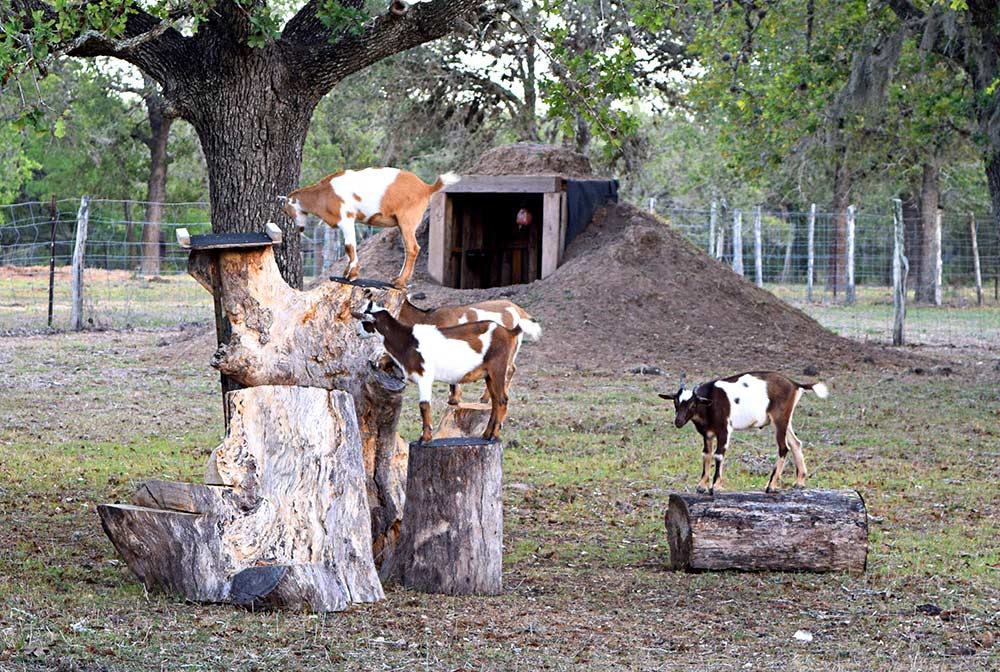
3. MUSCOVY DUCK
Yep, duck trumps chicken on this list. I’m not dissing chickens; some breeds can be excellent layers. But if you want an all-around better critter, look into at least a handful of Muscovies. The only duck not actually descended from a duck (all ducks descend from the Mallard), Muscovies are more closely related to geese, with the Egyptian Goose being their closest relative.
Because they haven’t been hybridized, they have more in common with their wild relatives, which means they’re more self-reliant than other ducks. Their wild nature motivates them to be outstanding foragers, and unlike domesticated ducks, they will take to the air if you don’t clip their wings. They also brood and raise their young, rather than abandoning them like their hybridized peers.
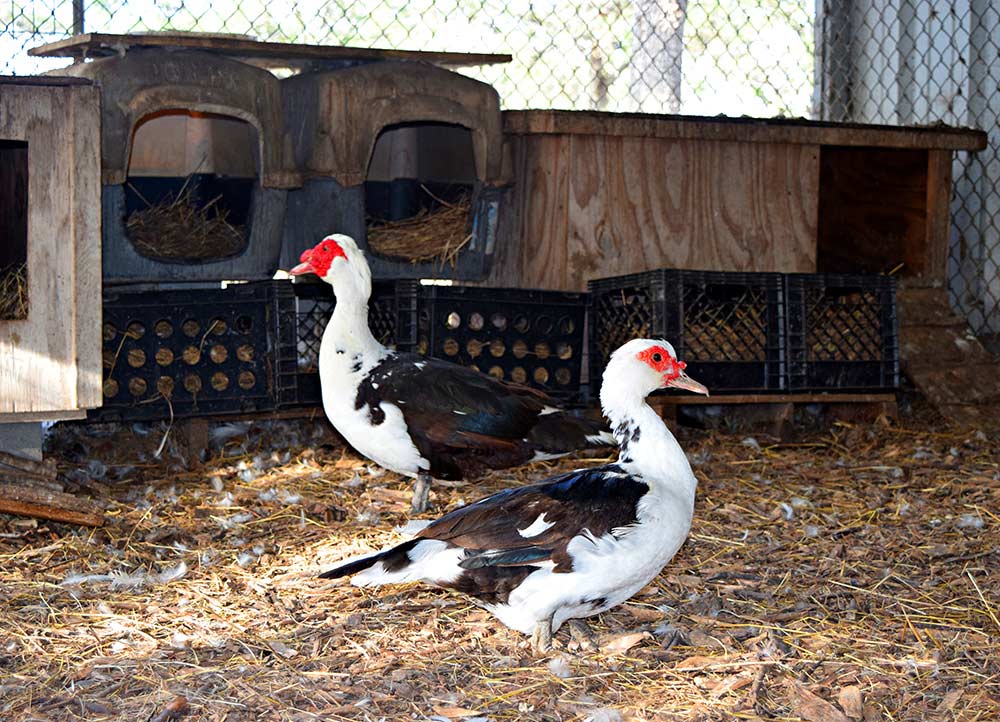
It gets better. Muscovies are one of the largest ducks out there, with drakes growing up to 15 pounds (double that of other domesticated ducks). That’s a lot of good meat right there. The smaller hens do their part, too. Duck eggs are more nutritious than those of chickens, and Muscovy eggs require fewer resources to produce than do chickens’ because Muscovies don’t need as much food (though the large size of the drakes can require more). Thanks to their geese relations, these ducks have a taste for grass and insects.
A combination of lower food costs and more meat on the bird makes for a better meat ratio than what you’ll get from a chicken, but the hens produce about half as many eggs a year as other layer breeds.
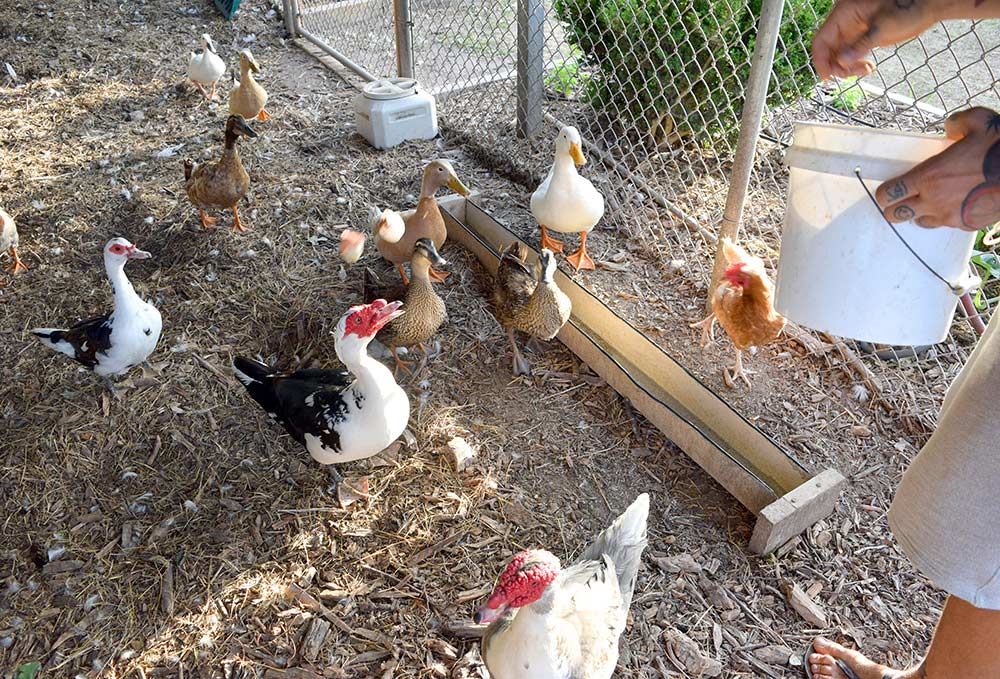
My favorite thing is that Muscovies are silent (except for some comical hissing from the drakes), and both drakes and hens do a hilarious mating dance ritual several times a day, which I can attest never gets old to watch.
4. KUNEKUNE PIG
Pronounced “cooney cooney,” these piggies are perfect for a homestead. Originating from New Zealand, kunekunes are medium-sized and have a pleasant temperament. Kunekune means “fat and round” in the Maori language, and it’s clear why.
Females grow to be between 100 and 175 pounds, while males range from between 200 to 250 pounds or more. Their short snouts discourage rooting, which is a major issue with other breeds, and they won’t challenge fences the way other porkers do. Best of all, these pigs are grass-based grazers and get most of their food from foraging, unlike grain-dependent hybridized pigs. They also taste as good as they are cute.
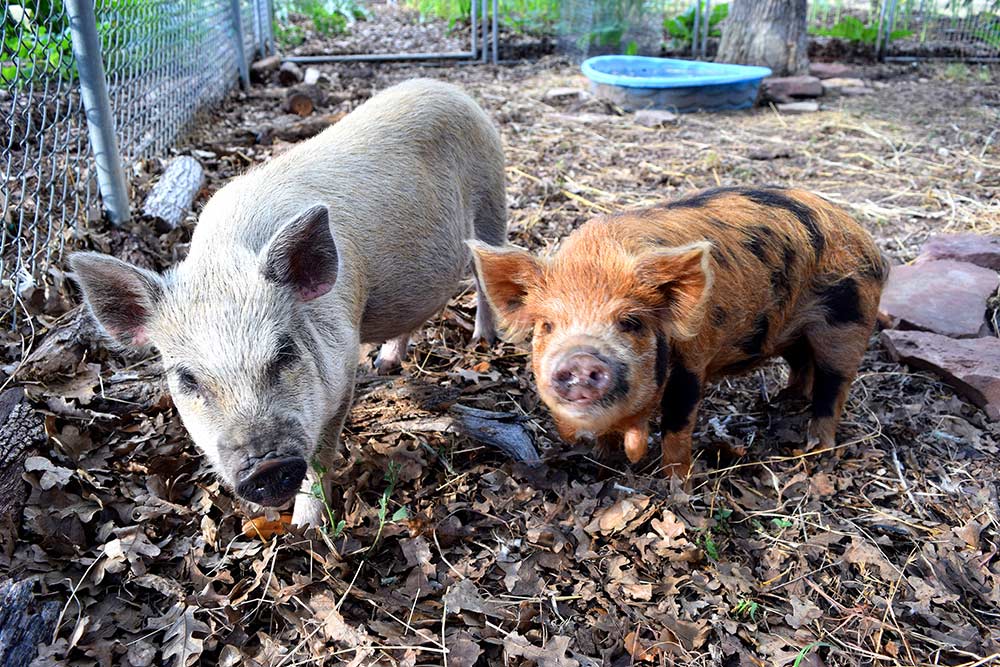
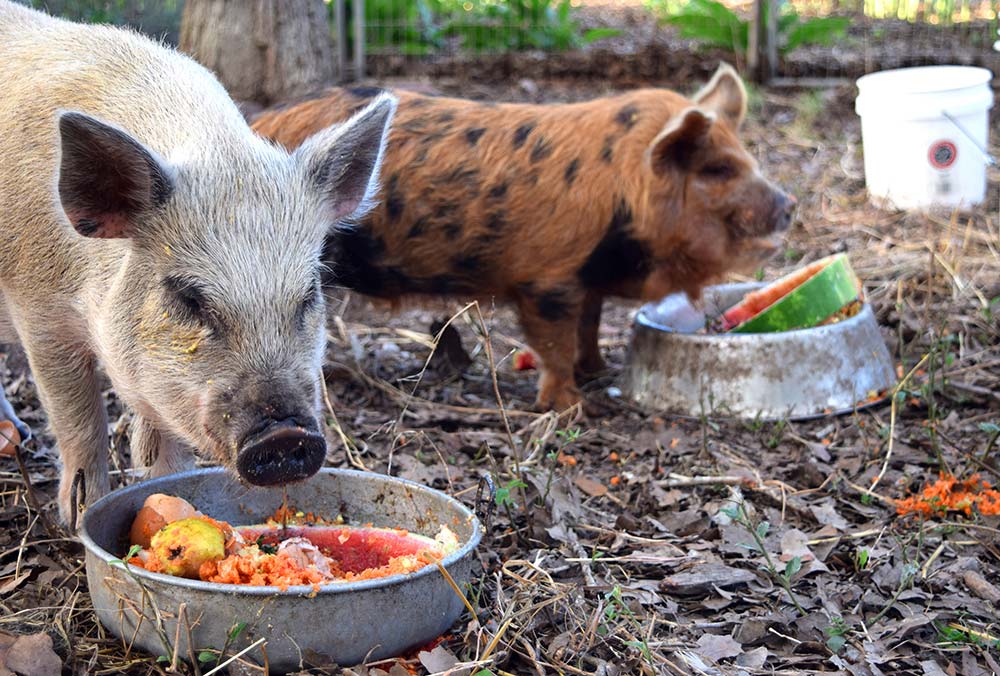
5. MEAT RABBIT
Rabbits are a smart choice to extend your farm fam. As they are housed in cages or hutches, they take up little space and pair well with other animals such as fowl. If your chicken or duck coop is large enough, you can hang your rabbitry (rabbit housing) inside the coop for a co-living setup.
Rabbit poop has a high nitrogen content, so it makes for excellent fertilizer. But get this: it stinks. If your coop is lined with mulch and you hang a cage there, the rabbit poop will compost well with the mulch and neutralize the smell.
“If your chicken or duck coop is large enough, you can hang your rabbitry (rabbit housing) inside the coop for a co-living setup.”
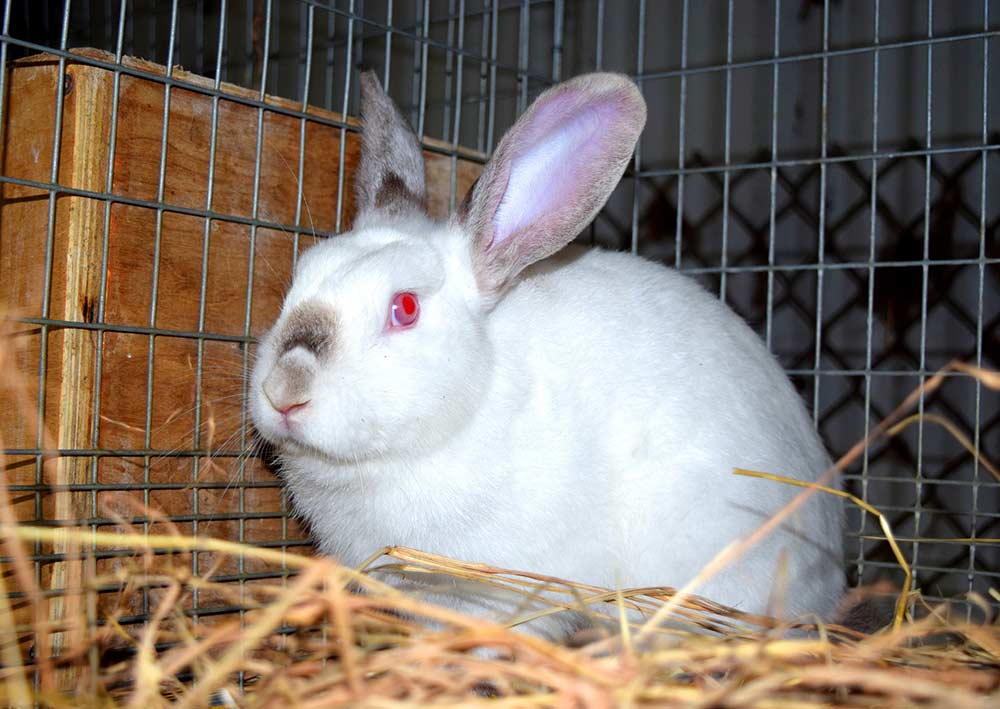
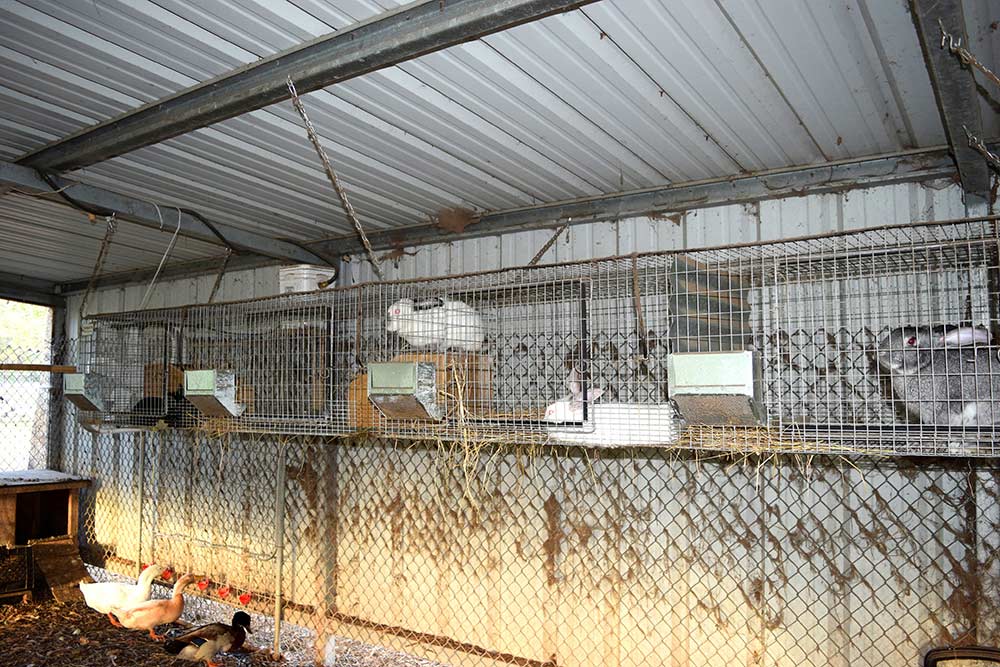
And: rabbits breed like…rabbits. A small bunny farm will provide ample rabbit meat, and you can always sell the offspring when it gets to be too much of a party. Doe rabbits have only a one-month gestation period and typically have large litters, so you’ll have bunches of bunnies in short order.
MULCH-NIFICENT
Mulch is miraculous. One of the best things you can do for your homestead is invest in a massive heap of mulch.
Animal Bedding
Lining your animal beds with mulch will reduce odor and keep them cleaner. A high nitrogen content makes animal poop smell bad, but the carbon from the mulch will absorb the nitrogen, neutralizing the smell. Mulch is especially good in chicken coops. Not only will the coop smell better, but the chickens will also turn over your compost as they scratch, mixing all the fertilized goodness together and doing the work for you.
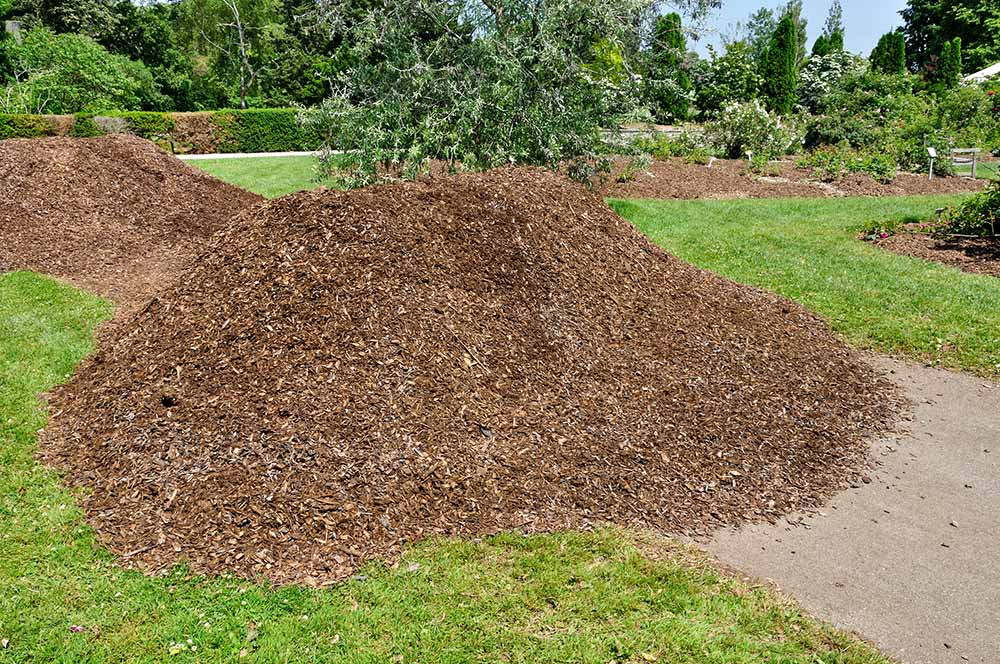
Fowl bedding will be ridden with feathers, kitchen scraps (which you should definitely feed them), excrement and hay. All of these things combine with the mulch to produce multiple layers of nutrients all breaking down at different paces, creating a superfood for plants. If you get one heap of mulch and line all your animal beds, then in one year’s time, replace all the bedding with new mulch and use that brown magic in your garden beds. For a finer, dirt-like compost, just screen out all the bigger wood chips.
Gardening
Mulch will change your plants’ lives. It’s the easiest way to put the least amount of work into gardening, and it yields the best results. Don’t be afraid to really pile it on, either, but if you live in the South, you’ll need barriers around your mulch to shield it from creeping grasses bent on overtaking your garden.
Mulch is easy to weed, since roots can’t find as solid a purchase as in soil, and it also insulates plants against extreme temperatures. Furthermore, it retains moisture consistently and creates a sort of “compost tea” for your plants whenever it rains, bathing them in nutrients. Think of mulch as an accelerator of the natural processes of a bio-dynamic environment (such as a temperate rain forest): organic matter collects on the forest floor, decomposes and nourishes the new growth budding below. Also like in a forest, mulch promotes fungal growth, which is a good thing. A healthy network of mycelium will allow plants to communicate and direct resources to where they are needed most.
THE CHOWDOWN
Here’s what’s on the menu for all the critters of Czexas Ranch, my family’s homestead in Southeastern Texas. You’ll see that several animals share the same staple: organic 18% protein waterfowl mash for layers. This is how you prepare it: measure the proper amount of feed for your number of animals (about a 2/3 dry cup per animal) and put it in a five-gallon bucket. Cover feed with water (ducks like it soupier than chickens and pigs) and seal with a lid, then allow 24 hours to soak the grains. Soaking will soften the grains and turn them into porridge, integrating the nutritious dust. Once you’ve exhausted a bucket, be sure to start another soaking.
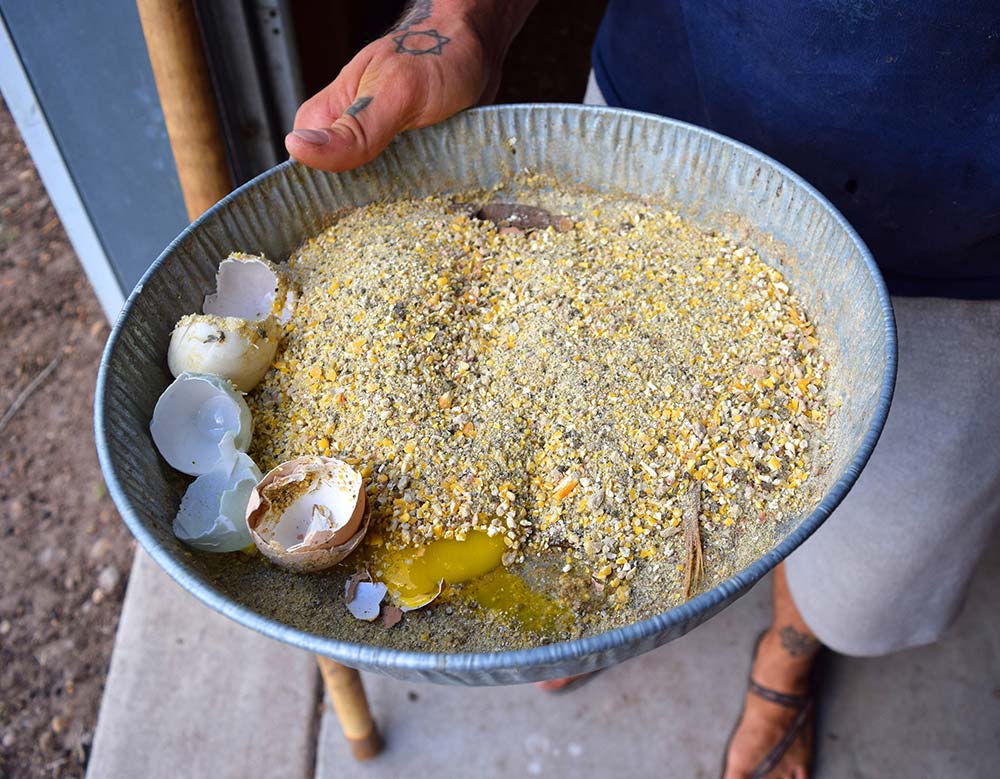
Cows
- Daily pasture grazing
- All-you-can-eat hay buffet
- Mineral lick (look into Power Lix 30 for beef cattle)
Goats
- Daily pasture grazing (be sure your goats have access to broadleaf plants and bushes, as they eat these instead of grasses)
- All-you-can-eat hay buffet (especially in winter)
- Morning: each goat gets a cup of organic alfalfa pellets
- Night: each gets a cup of organic chicken scratch grains (use fence feeders at night to incentivize goats to return from pasture)
- Salt lick
- Baking soda for debloating (goats will self-regulate)
Ducks
- Daily pasture grazing
- Feed your ducks at night to motivate them to return (since they could continue to forage). Waterfowl require more protein than chickens to lay good eggs. Choose an organic 18% protein waterfowl mash for layers (such as that from brand Coyote Creek), which can be used for ducks, chickens and even pigs
- Night: kitchen scraps
*Note: Chickens require less niacin (a B vitamin) than ducks, so if you have both animals, it’s better to feed them both a formula made for ducks than one for chickens (because chickens can handle getting a surplus of niacin).
Chickens
- Daily pasture grazing
- 18% protein waterfowl mash for layers (a mash is less processed than pellets). If you also have ducks, consider separate feeding times. Chickens are more aggressive than ducks, so they will steal the ducks’ food. Try feeding your chickens in the morning and ducks at night. Like with the duck feed, it’s best to soak your chicken feed 24 hours, but you can use less water so it’s just moist the next day. Use scratch grains to motivate animals and separate them (distract chickens with scratch, let ducks out of coop, reward with scratch)
- Night: kitchen scraps
*Note: If you have chicks, ducklings or goslings, use a chick starter high-protein crumble for four to six weeks and supplement it with one tablespoon of brewer’s yeast per cup of feed (this ensures they’re getting the proper vitamins and nutrients).
Pigs
- Hay as needed
- Morning: one cup each of 18% protein waterfowl mash for layers, pre-soaked, plus one raw egg each
- Night: kitchen scraps (except avocado skins/seeds, garlic and onions). If there aren’t enough food scraps, do one cup each of grain mash
- Night: beef fat trimmings, if possible
Rabbits
- Hay as needed (this is especially important for a rabbit’s digestion)
- ¼ cup each of organic rabbit alfalfa mash or pellets, morning and night
- Daily fresh greens (opt for leafy greens like sunflower, comfrey, oregano, mint, cardoon and/or tree spinach/Chaya. Dandelions and wireweeds are also good choices)
A version of this article first appeared in the August 2022 issue of American Outdoor Guide Boundless.

